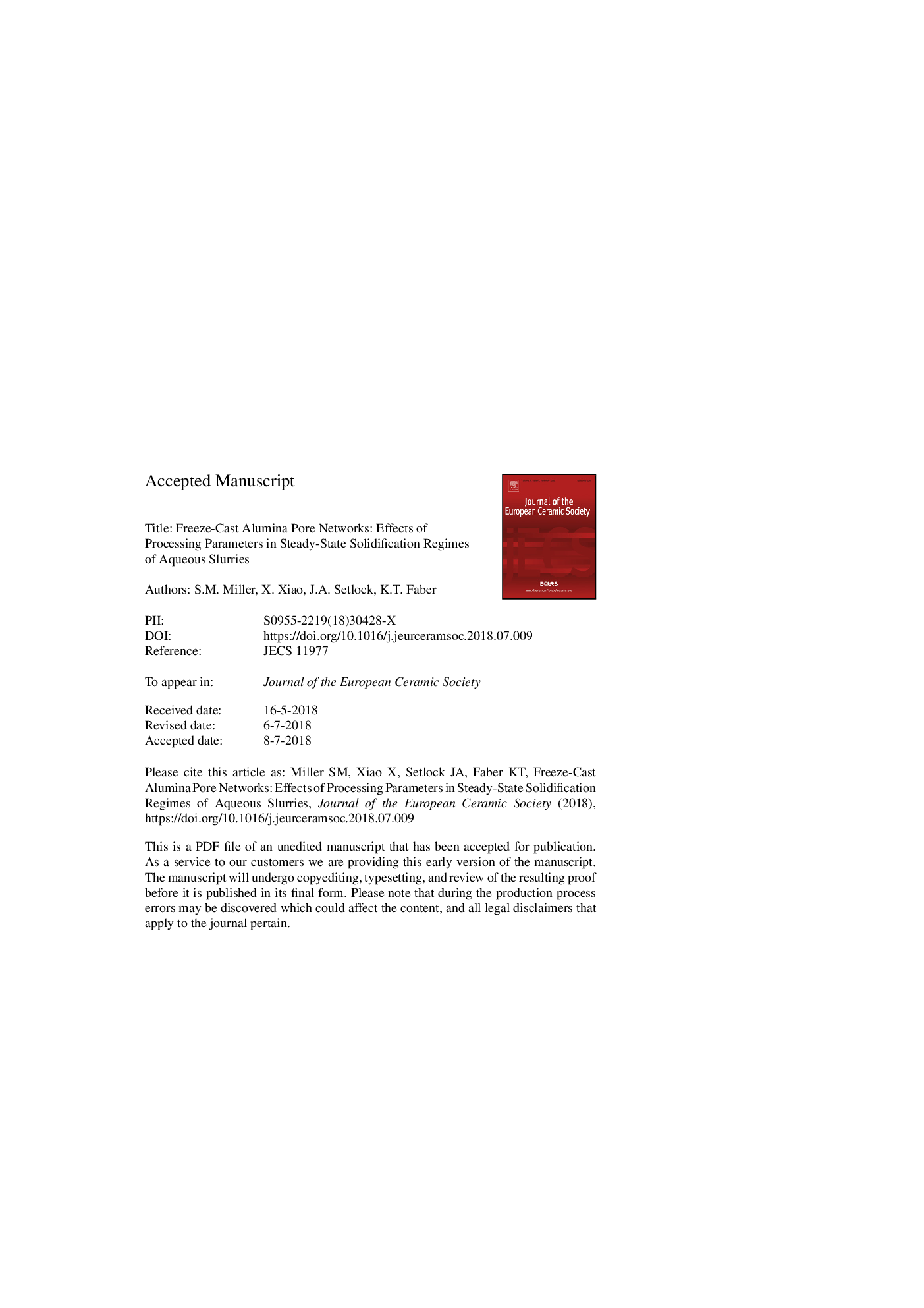| Article ID | Journal | Published Year | Pages | File Type |
|---|---|---|---|---|
| 8948564 | Journal of the European Ceramic Society | 2018 | 41 Pages |
Abstract
Aqueous alumina slurries with varying solids loading and particle size were freeze cast under seven freezing conditions to investigate the influence of these on pore network characteristics including pore size and geometric specific surface area. Slurry temperatures were recorded in situ to determine freezing front position and velocity during solidification, which were then analyzed via regression and modeled using solidification theory. Classic mathematical models for the time dependence of freezing front position and velocity were found to hold for freeze-cast slurries. Building on these, a one-phase Stefan problem was used to describe freezing kinetics. Models for freezing front velocity were combined with solidification theory to obtain predictions of microstructural feature size from freezing kinetics. Results showed that, while there may be a dependence on solids loading, the combination of mathematical modeling of solidification and classic solidification theory is applicable to freeze-cast ceramics and accurately describes pore network characteristics from processing parameters.
Keywords
Related Topics
Physical Sciences and Engineering
Materials Science
Ceramics and Composites
Authors
S.M. Miller, X. Xiao, J.A. Setlock, K.T. Faber,
